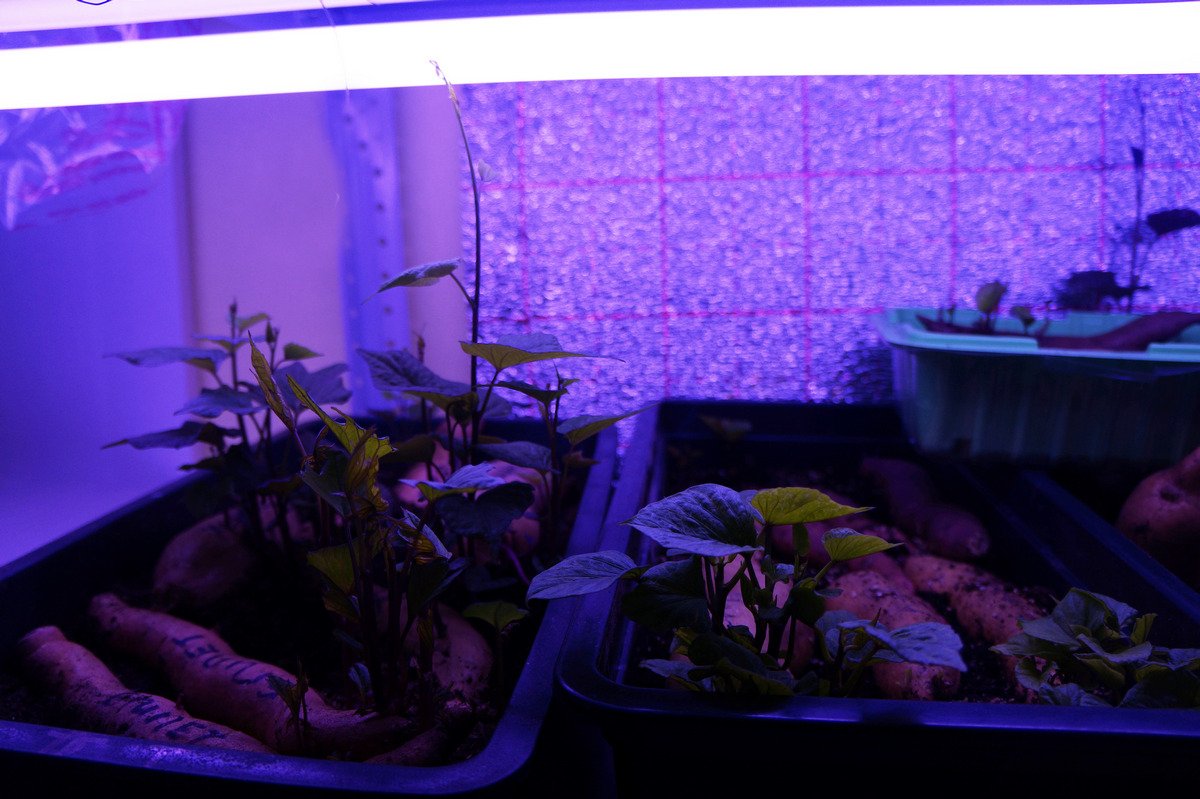Why hang purple lamps over the plants
In winter, instead of warm yellow lights, you can often see an ominous purple glow in the windows of apartment buildings. These are glowing phytolamps, with the help of which amateur florists hope to cheer up their houseplants and seedlings. We tell why they use such an unusual light, whether it really helps plants and how the astronauts participated in this story.
A rare plant lover – whether he has his own farm or just a couple of tubs on the windowsill – does without fertilizers. However, plants feed not only through the roots, but also through the leaves, which absorb carbon dioxide and light. Does this mean that they can be “fed” not only with fertilizers but also with light? And can this force them to yield even more?
Which light is tastier?
Kliment Timiryazev and Teodor Engelman found the answer to this question independently of each other in the second half of the 19th century. They decomposed sunlight into a spectrum, illuminated it with different parts of the plant, and measured how actively they photosynthesized (that is, absorbed carbon dioxide, released oxygen, and produced sugar). They used slightly different techniques, but obtained similar results. It turned out that not every part of the spectrum causes the sheet to absorb carbon dioxide and emit oxygen with equal efficiency. It worked best in red and blue light, and worst in green. The fact is that the pigments that capture light for photosynthesis – chlorophylls and carotenoids – absorb red and blue light well, and almost do not react to green.
Later, the same Timiryazev found out that red has another valuable property. The energy trapped in the red rays is used almost entirely by the leaf to form biomass – while in the blue light there is too much energy, so half is “lost” in the form of heat. So, you can save: if you illuminate greenhouses with one red light, electricity will be used more efficiently and will not be lost, and plants will become more productive – will be able to accumulate more nutrients than if they grew under normal sunlight.
There is only one thing: plants need light not only for photosynthesis. And also, for example, to determine in which direction to grow, when to bloom and bear fruit. In addition, the light triggers the opening of the stomata (through which the leaf exchanges gases with air) and regulates the circadian rhythms of leaf movement and flower opening. To do this, plant cells have special molecules – photoreceptors, which change the expression of genes and metabolism in the cell in response to light rays. The main photoreceptors of plants, as well as photosynthesis pigments, work with red and blue light, but can also catch green, ultraviolet and far red.
It turns out that the life of a plant depends on the sum of light signals of different colors, but what effect each of them produces in the absence of others, plant physiologists in Timiryazev’s time did not know – and do not quite understand until now. Therefore, the replacement of natural light with pure red rays can not lead to an increase in yield, but to the exact opposite result – theoretically in such conditions, plants should wither or at least give less fruit than usual.
